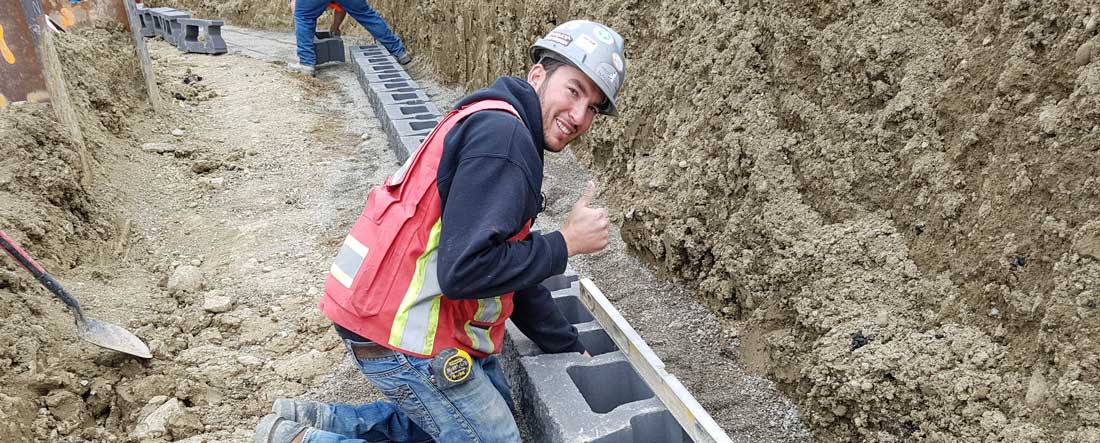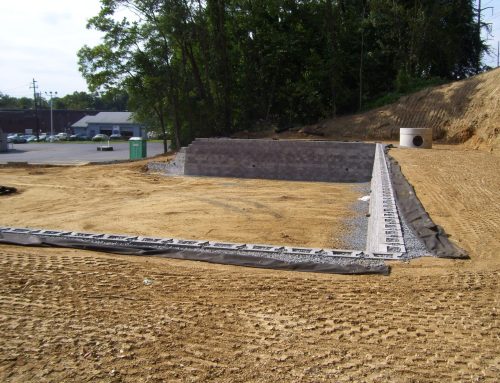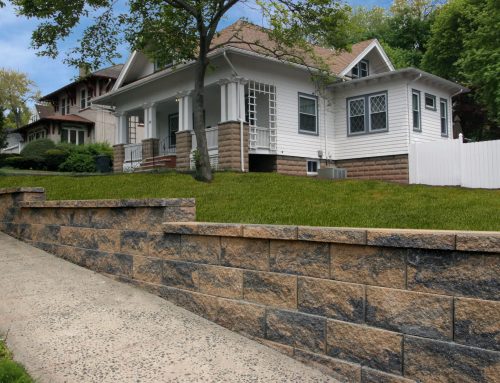We see it all too often. Our Neighbour has taken on the project of building a retaining wall to level out the yard, walkway or even a simple planter. The weekend warrior is out in full force ordering materials and buying work gloves to build the beautiful retaining wall…. Only to find that this little project can be a huge under taking. 2 years later the marvelous retaining wall is leaning over and falling apart.
Tip #1: Water is Your Block Retaining Walls’ Enemy
water is your enemy. Well, maybe not yours, but definitely your retaining walls enemy. We see it over and over again. Improper water mananagement can decimate a wall. Keep water away from your wall. Don’t cheap out on the drainage.
Watch where the water flows and keep it flowing away. That can be on the top and at the base of the wall. Regardless of where the water is coming from we want to keep it flowing out and away from the block retaining wall.
If you are unsure, add extra drainage rock behind the wall and inside the blocks. If there is one thing we have learned it’s that you can not have too much drainage gravel.
Tip #2: It’s All About the Base
Base preparation for retaining walls is often overlooked and underachieved. The base of your retaining wall structure is ultimately the defining factor in how good your wall will look.
Pay attention to the type of ground you’re building on. A lot of topsoil or bedrock can hold hidden water, which will only present itself once the soil is disturbed.
Take the necessary steps to understand the ground you’re building on. Plan accordingly so your base will remain stable and not run into issues down the road.
Now is the time to re-adjust your planning and deal with it.
Tip #3: Organic is Bad
Organic may be good for your belly, but it certainly isn’t good for a retaining wall’s structure. Organic soils have virtually no benefit or strength to contribute to your wall.
As a matter of fact, organic topsoil will keep breaking down, causing more problems later on in your wall’s life. However, you will need top soils (organics) for the top part of your wall and for the grass to grow.
If you’re building a planter for growing vegetables, there are also great design details that can incorporate organic soil.
But, during the actual construction of your wall, use the right materials and steer clear of organic!
Tip #4: Hire an Engineer
An engineer’s role is crucial; they ensure your retaining wall is not just visually appealing but safe and sturdy.
Every location and region presents unique advantages and challenges. Your local geotechnical engineer can design your wall to the area’s specifications. They can provide a cross-section design tailored to your soil, helping you avoid future mishaps.
Without an engineer, you might end up spending more on corrections than on hiring a professional. This is as noted by American Groundskeeping.
The wisest course of action? Engage an engineer at the outset to gain a thorough understanding of your land’s ground and soils.
Tip #4.5: Measure Twice, Cut Once
String lines and measurements are very important for the initial outline of your retaining wall system. Keeping your wall straight is crucial to ensuring that you have the right measurements, the proper amount of block units, and so on.
Keep measuring and using string lines to keep things straight, even if you are curving!
Learn all about proper installation practices in our installation section here.
Tip #5: Geogrid is NOT a Snow Fence
Although geogrid sure does look like our North American snow fences, it really is not. Geogrid is designed for connecting to your retaining wall blocks, drainage gravel, and fill area.
The geogrid has been manufactured with the tensile strength to hold those layers you’ve compacted back into place. Its sole and only purpose is to hold these items in place and not to keep snow away from your wall.
In fact, even the Great Wall of China was designed this way using reed mats layer after layer after layer.
Bonus Tidbits
- Always call before you dig to avoid hitting any lines that may be hidden in your ground.
- Check with your local bylaws to see how high you can build your wall before you require designed and stamped engineer prints.
- Download our installation manual for step-by-step installation of your cornerstone block retaining wall.
Follow these tips, and your retaining wall will stand firm and tall, turning heads and raising eyebrows in the neighbourhood.
And remember, if you’re tired of all the admiring glances and the incessant knocking on your door asking, “Who built that magnificent wall?”—don’t worry. You can always redirect them to us at Cornerstone Wall Solutions.
We’re here to take your neighbours’ envy off your hands and build their dream walls too! Because at Cornerstone, we believe there’s no such thing as too much of a good thing—especially when it’s a beautifully built retaining wall!
Have a listen to what the Inventor or CornerStone Retaining Wall Blocks has to say






















